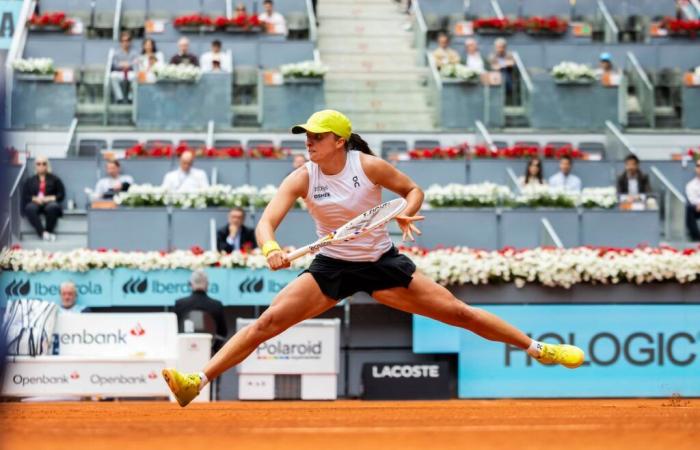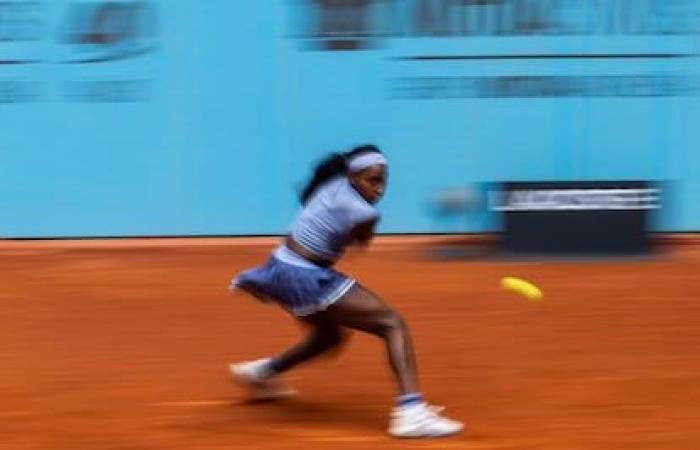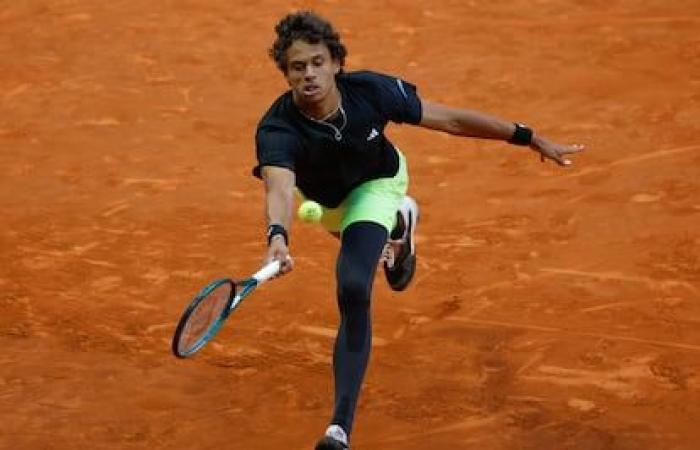Entrections have been falling in the Magic Fund of Madrid, where the successive setbacks that has been taking the tournament – anuscies of Carlos Alcaraz and Paula Badosa, fall of Novak Djokovic – added the historic blackout on Monday. “They have joined a few things,” says Maite, visitor to the district of Arganzuela and faithful follower of the tennis. “But now we have the girls, huh? Because with the boys lately it is difficult to hit, but with them the thing has changed,” adds the fans, referring to the regularity offered in these first five months of the course by the players, in contrast to the oscillation and surprises that the male circuit has held in recent dates, until not much firm terrain, today slippery. Very uncertain. Because beyond Jannik Sinner and Alcaraz, two certainties with their singularities, case of the second, the present describes a lot of curve. Difficult the predictions.
Could anyone imagine Jack Draper or Jakub Messik crowning on the American tour of March, Indian Wells and Miami? Or Holger Rune in the Godó in Barcelona? Who was going to say that Djokovic was going to descend to fifth of the rankingor that fixed as casper ruud or stefanos tsitsipas were going to disappear from the top-10? They dance the tennis players of the ATP noble plant, entries and practically weekly outputs, while the WTA is approaching where it intended because after Serena Williams, of the very long reign of the American, a recognizable and linear hard core is settled, increasingly robust. Àlex Corretja prophesied in January: “I perceive a change of energies, there will be new faces and surprises. The new generation is already released.” And time grants him reason.
Until not too long ago, a derogatory mantra associated with female tennis was repeated in the analyzes, highlighting the instability of the players above the attractiveness of the alternation, as well as the absence of references; And, conversely, the power of Djokovic, Nadal and a second consolidated line were subject to praise by critics, although the course of the tournaments was rather predictable and that a bell or refreshing irruptions occurred rarely. However, they are times of change. “And it was exactly what we needed,” they celebrate within the WTA, being chatting to the hegemony of Aryna Sabalenka and Iga Swiatek, and the constancy acquired by Jessica Pegula, Coco Gauff or a novel and suggestive attraction: the young Mirror Andreeva.
Expresses the development of the Madrid Tournament The New Stage, with five of the ten best tennis players on the quarterfinals, for only two representatives among the boys. To the firm hand of the two strongest, increasingly solid profiles have been added – also in the middle class – and rare is the time that the main candidates do not progress until the final dimensions. Regardless of the figure of titles, Sabalenka (26 years old) and Swiatek (23) continue to strengthen and although he has not achieved any trophy for almost a year, the second has reached at least the rooms in the eight tournaments in which he has participated in this course. The Belarusian, meanwhile, has signed five finals and was only lost in the Arabic desert, Doha and Dubai, where she suffered a bump that immediately rectified.
Uniformization
“Who will say now that the WTA is boring?” He claimed a year ago Swiatek in the Magic Box, after a wonderful final of more than three hours against Sabalenka. In contrast, Andrey Rublev triumphed against Felix Auger-Aliassime in an tasteless outcome of which little memory remains, beyond the necessary registration in history. Neither the Russian nor the Canadian survive in this edition, in which the program of the quarterfinals proposes amazing names such as those of Matteo Arnaldi (44º), Francisco Cerúando (21º) or the Mesik itself (23rd), the latter practically anonymous in the eyes of the general public; Even more unknown is the Canadian Gabriel Diallo (78º).
Until now, 2025 has proposed 22 different winners in the tournaments played in the ATP circuit, for the 18 winners registered in the WTA. Thus, the uniformization of the dynamics of one and the other circuit is thus underlined, although with divergent trends. As the regularity between the girls in the upper zone increases, unpredictability also grows among the boys. Neither Zverev, nor Taylor Fritz nor Djokovic – the three series heads, once Alcaraz (2nd) took a step aside – already appear on the map of the tournament, while Sabalenka, Swiatek and Gauff – three of the first four – continue to shine strongly.

After the tyranny of the three giants and Andy Murray, hoarders in almost all the scenarios, everything opens. “Many players are growing, the level is very high. Maybe Sinner, Alcaraz, Djokovic and Zverev can have something else, but now everyone can win, because everyone is playing very well. We have more opportunities, but each game is more difficult, a war. This is good for everyone and for me,” he said closing it on Wednesday. And share the opinion Zverev, who says that today it is more complicated to break the barrier to be among the best ten.
“It’s much more difficult. Before, I remember that when I got to top-10 For the first time, in 2017, that strip was very strong and we had the four best players in the world, with Novak, Rafa, Roger, Andy, Stan, of the Potro and all those … but I would say that the level from 10 to 20 and 20 to 30 was much lower; The top of the top was incredible, but now everything else is more difficult, ”resolves the German, while Alexander Bublik headed to the judge during the duel against Mesik, trying to find a reasoning:“ Do you remember how easy the tennis was five years ago? There were a lot of uncles random in it top-50 that they could not even move. Now this uncle [refiriéndose a Mensik] It is not or top-10 And play this good. What noses is this?








